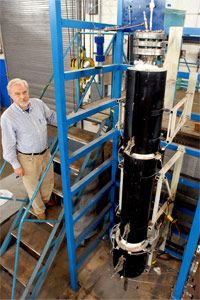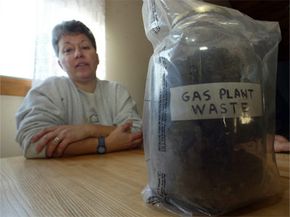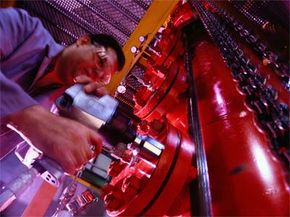Key Takeaways
- Gasification converts carbon-containing materials into syngas (a mixture primarily of hydrogen and carbon monoxide) through high-temperature and high-pressure reactions.
- Gasification allows for cleaner energy production by enabling easier capture and storage of pollutants like sulfur, mercury and even CO2.
- Syngas can be used to generate electricity, produce substitute natural gas or create other chemicals.
Some of the most promising, attention-getting energy alternatives aren't revolutionary ideas. We all know about windmills and waterwheels, which have been around for centuries. Today, a variety of improvements, including innovative turbine designs, are transforming these ancient machines into cutting-edge technologies that can help nations satisfy their energy needs.
There's another old process -- one you probably don't know much about -- that's gaining in popularity and may join wind and hydropower in the pantheon of clean, renewable energy. The process is known as gasification, a set of chemical reactions that uses limited oxygen to convert a carbon-containing feedstock into a synthetic gas, or syngas.
Advertisement
It sounds like combustion, but it's not. Combustion uses an abundance of oxygen to produce heat and light by burning. Gasification uses only a tiny amount of oxygen, which is combined with steam and cooked under intense pressure. This initiates a series of reactions that produces a gaseous mixture composed primarily of carbon monoxide and hydrogen. This syngas can be burned directly or used as a starting point to manufacture fertilizers, pure hydrogen, methane or liquid transportation fuels.
Believe it or not, gasification has been around for decades. Scottish engineer William Murdoch gets credit for developing the basic process. In the late 1790s, using coal as a feedstock, he produced syngas in sufficient quantity to light his home. Eventually, cities in Europe and America began using syngas -- or "town gas" as it was known then -- to light city streets and homes. Eventually, natural gas and electricity generated from coal-burning power plants replaced town gas as the preferred source of heat and light.
Today, with a global climate crisis looming on the horizon and power-hungry nations on the hunt for alternative energy sources, gasification is making a comeback. The Gasification Technologies Council expects world gasification capacity to grow by more than 70 percent by 2015. Much of that growth will occur in Asia, driven by rapid development in China and India. But the United States is embracing gasification, as well.
Let's take a closer look at how this process works. We're going to start with coal gasification, the most common form of the process.
Advertisement




